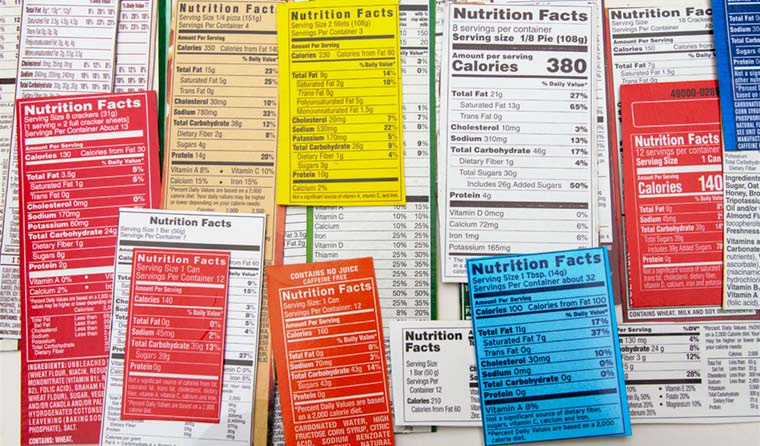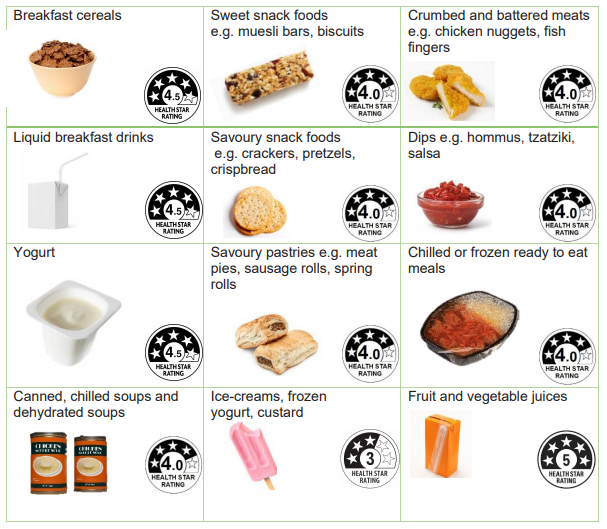38 how to read nutrition labels australia
Reading Food Labels - NZ Nutrition Foundation This has information on how much of the following nutrients are present: Energy (kilojoules) Protein (grams) Total fat (grams) Saturated fat (grams) Total carbohydrate (grams) Sugar (grams) Sodium (milligrams) It is up to the food manufacturer if they want to display additional nutrients such as fibre, iron, calcium etc. Food label reading guide | Nutrition Australia Always read the per 100g column on the nutrition information panel (NIP) to compare similar products, as the serve sizes can differ between brands. Always compare the nutrition information panel (NIP) or health star rating of similar products, for example compare one brand of yoghurt with another brand of yoghurt.
How to Understand and Use the Nutrition Facts Label | FDA It's important to realize that all the nutrient amounts shown on the label, including the number of calories, refer to the size of the serving. Pay attention to the serving size, especially how ...

How to read nutrition labels australia
How to read food labels | healthdirect How to read the Nutrition Information Panel The Nutrition Information Panel tells you the size of a standard serving of the product and which nutrients are contained in that serving. You can use the label to compare the product with what's in similar packaged foods. Look out for information about: Energy: A kilojoule is a measure of energy. How to read a label | NSW Food Authority How to read a label. Nearly every food product requires a label with specific information that tells us what's in it, how to handle it, and where it has come from, to help us make healthy and safe food choices. ... See Labels & the law for a list of everything that should be included on a food label. Ingredients & Nutrition. The ingredients ... How to Read Food Labels & Understand Nutrition Info Panel | Better ... Nutrition Australia states that 460-920g daily value of sodium is adequate for our health. That equates to 1.15-2.3g of salt per day. Excess salt consumption raises your blood pressure and hypertension is associated with a higher risk of stroke and heart disease. Keeping your intake to 4g of sodium per day or less is key.
How to read nutrition labels australia. How To Read A Nutrition Label | GoodLife Kitchen - YouTube Nutrition is a key part of healthy living, but knowing what exactly is in your favourite products can be a little confusing. Not to fear, this handy video wi... How to read food labels in Australia: Find nasties and real nutritional ... My advice for reading food labels is to look at the 'per 100g' values, as 'per serve' can often be misleading if you're likely to eat more than the suggested serving size. The 'per 100g' column is also the most useful for comparing products to assess their sugar, protein, sodium and fat content. How To Read Nutrition Labels, Australia - Australian Organic Products What are the four steps to reading a nutrition label? To begin with, you should always note the serving size on a food label. This can help determine you're eating the correct amount for what the nutrition information states. How to Read Food Nutrition Labels | nib Let's start at the top of the label with 'energy'. Usually measured in kilojoules, it's the total amount of energy you'll consume from the food or drink. Energy is a combination of fats, protein and carbohydrates and the more energy you ingest, the more you should aim to burn off (for example, with exercise).
Labelling poster - how to read food labels - Food Standards Australia ... This interactive resource explains the food labelling requirements set out in the Food Standards Code and what that information means. Click on the numbers to find out more about food labelling. A useful poster is also available. You can download a copy here (PDF 372KB), or for a printed A2 version please email information@foodstandards.gov.au. How to Read Nutrition Labels - New Idea Food As a rough guide Chloe recommends: Sodium/Salt: <120mg/100g for low salt or <400mg/100g for moderate. Energy: aim for: <600kJ per serve for a snack. Fat: aim for <10/100g Saturated fat: aim for 2g/100g or less Trans fat: aim for 1g/100g of less Sugar: less than 10g/100g Fibre: 7.5g/100g or more How to read food labels 2022 How To Read Nutrition Labels on Your Food Packaging? - RealFit This is done by printing what percentage of daily nutrition requirements are fulfilled by the product, whose nutrition label you are reading. While the quick guide to percentage daily value is an easy way for many to track daily nutrition information, it is not always reliable. Nutrition Labels in Australia: How To Choose Healthy Foods The governing body for food labelling in Australia is Food Standards Australia New Zealand . This organisation is in charge of protecting public health by ensuring food is safe to eat with correct labelling. FSANZ sets the standard for what information must be included on any food and nutrition label. What To Look For On A Nutrition Label
How to Read Nutrition Facts | Food Labels Made Easy - YouTube To support our channel and level up your health, check out:Our Fast Weight Loss Course: B... Nutrition information panels - Food Standards Australia New Zealand omega-3, omega-6 or omega-9 fatty acids The average quantity must be declared in the NIP. The quantity of the claimed fat must also be included in the NIP, for example, omega-3 fatty acids. Carbohydrates Carbohydrates are in foods like bread, cereals, rice, pasta, milk, vegetables and fruit. Carbohydrates in the NIP includes starches and sugars. How to understand food labels | Eat For Health - Australia The Nutrition information panel on a food label offers the simplest and easiest way to choose foods with less saturated fat, salt (sodium), added sugars and kilojoules, and more fibre. It can also be used to decide how large one serve of a food group choice or discretionary food would be and whether it's worth the kilojoules. Understanding food labels fact sheet - NDSS Labels on packaged foods provide information that can help you make healthier food choices. Making healthy food choices can help you to manage your diabetes, weight, and overall health. Understanding how to read food labels can help you choose foods with more fibre and less saturated fat, salt (sodium), added sugars and kilojoules.
Understanding food labels: How to read Australian nutritional panels Under FSANZ rules, these labels must reveal how much of the following is in the product: Energy (in kilojoules or both kilojoules and calories) Protein Fat Saturated fat Carbohydrates Sugars Sodium (salt) These contents must show average amount per 100g (or 100ml for liquids) and per serving. A breakdown of what's on nutrition labels
Understanding Food Labels | WW Australia As a general rule try to choose foods that contain less than 10g of fat per 100g, or 2g per 100g for milk, yoghurt and ice-cream. Saturated fat Saturated fats are found predominantly in fatty cuts of meat, chicken skin, full-fat dairy products, baked goods, deep-fried takeaways and tropical oils.
How to Read Food Labels & Understand Nutrition Info Panel | Better ... Nutrition Australia states that 460-920g daily value of sodium is adequate for our health. That equates to 1.15-2.3g of salt per day. Excess salt consumption raises your blood pressure and hypertension is associated with a higher risk of stroke and heart disease. Keeping your intake to 4g of sodium per day or less is key.
How to read a label | NSW Food Authority How to read a label. Nearly every food product requires a label with specific information that tells us what's in it, how to handle it, and where it has come from, to help us make healthy and safe food choices. ... See Labels & the law for a list of everything that should be included on a food label. Ingredients & Nutrition. The ingredients ...
How to read food labels | healthdirect How to read the Nutrition Information Panel The Nutrition Information Panel tells you the size of a standard serving of the product and which nutrients are contained in that serving. You can use the label to compare the product with what's in similar packaged foods. Look out for information about: Energy: A kilojoule is a measure of energy.

































Post a Comment for "38 how to read nutrition labels australia"